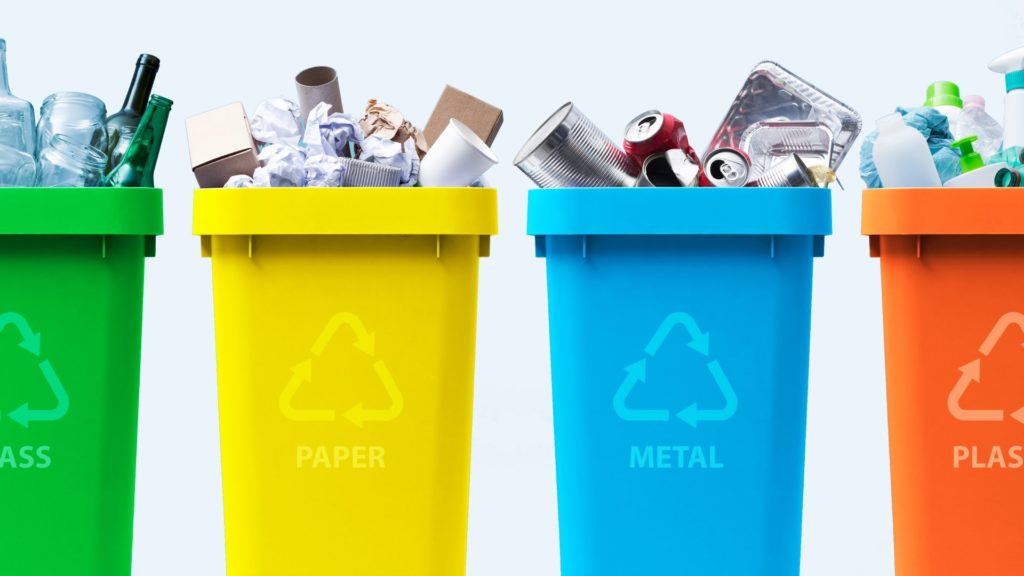In recent years, sustainability has become a decisive factor in consumers’ purchasing decisions. According to a study by the Harvard Business Review, 65% of young people prefer to buy products from brands that demonstrate a clear commitment to environmental sustainability. This awareness is also reflected in packaging, which is no longer seen merely as a means of product protection but as a declaration of values and ecological responsibility.
Particularly in the context of European sustainability policies, such as the Green Deal and the objectives of the PNRR (Italy’s National Recovery and Resilience Plan), the packaging industry is called to take a pivotal step towards ecological transition. By 2030, the European Union aims to make 100% of packaging recyclable or reusable. In this scenario, monomaterial packaging appears to emerge as one of the most promising solutions to address the environmental, economic, and social challenges related to waste production and management.
However, choosing sustainable packaging is not just a regulatory necessity but also a strategic opportunity for companies. While monomaterial packaging offers clear advantages in terms of recyclability and simplified disposal processes, multimaterial packaging—often considered less sustainable—continues to provide unique functionalities that cannot be overlooked.
In this article, we will explore the pros, cons, and future perspectives of both solutions.
1. What is Monomaterial Packaging?
Monomaterial packaging refers to a type of packaging made exclusively from a single material, such as paper, plastic, glass, or metal. This solution simplifies the recycling process by eliminating the need to separate different materials, thereby reducing the risk of improper disposal and enabling more efficient recovery in terms of both time and cost.
In recent years, monomaterial packaging has gained widespread use in the food sector, which is among the largest producers of packaging waste, and is gradually making inroads into other sectors such as pharmaceuticals and cosmetics. The growth of this trend is primarily driven by the economic and environmental benefits that this solution offers.

Innovation in monomaterial packaging focuses particularly on materials such as:
- Paper and cardboard: Traditionally used for dry goods and food packaging, these materials are increasingly applied in various sectors thanks to treatments that enhance their strength and barrier properties.
- Monomaterial plastics: Polymers such as polyethylene (PE), polypropylene (PP), and polyethylene terephthalate (PET) stand out for their lightness, flexibility, and protective capabilities.
- Glass and metal: More traditional materials that remain highly recyclable, with high recovery rates in waste management systems.
2. Advantages and Challenges of Monomaterial Packaging
2.1 Advantages
The primary strength of monomaterial packaging is its immediate recyclability. Since it does not require complex separation processes, it significantly reduces the costs and time needed for material recovery and reuse. Other advantages include:
- Environmental sustainability: Monomaterial packaging facilitates the creation of a true circular economy, where waste is transformed into new resources without any loss of quality.
- Cost reduction: Simplified design and the ability to leverage existing recycling infrastructure make monomaterial packaging an economically viable choice.
- Branding impact: Using sustainable packaging enhances brand image, catering to the demands of eco-conscious consumers.
2.2 Challenges
Despite its advantages, monomaterial packaging presents some limitations:
- Limited strength and functionality: For certain types of products, monomaterial packaging may offer less protection against oxygen, moisture, and other external factors compared to composite materials.
- Less flexible design: Aesthetic and creative features can be more challenging to achieve with single-component materials.
- Technological barriers: Developing monomaterial solutions capable of competing with multimaterial packaging requires significant investments in research and development.
3. Multimaterial Packaging: Characteristics and Sustainability
Unlike monomaterial packaging, multimaterial packaging combines different materials to deliver superior performance in terms of strength, durability, and product protection. For example:
- Coffee packaging often includes layers of paper, plastic, and aluminum to protect the product from moisture and oxygen.
- Glass bottles may feature plastic caps and paper labels, creating a functional yet complex combination for recycling.
3.1 Advantages
- Advanced performance: Multimaterial packaging can provide barrier and preservation properties that monomaterial options may not always guarantee.
- Creative design: Combining materials allows for the development of visually appealing and unique packaging, essential for marketing certain products.
3.2 Challenges
- Recycling complexity: Separating the materials requires complex processes and often involves significant energy consumption.
- Perceived sustainability: Despite technological advancements, multimaterial packaging is often perceived as less eco-friendly compared to monomaterial alternatives.
It is important to note that not all multimaterial packaging is inherently unsustainable. The adoption of advanced technologies and the use of biodegradable or compostable materials are improving the environmental performance of this category.
4. Monomaterial vs. Multimaterial: What Does the Future Hold?
The choice between monomaterial and multimaterial packaging depends on the specific needs of the product, the market, and the end consumer. Both solutions offer unique opportunities but also come with challenges that the packaging industry has already begun addressing with innovation and strategy.
Monomaterial: The Driver of Circularity
Thanks to its high recyclability, monomaterial packaging is poised to play a central role in achieving the European Union’s sustainability goals. However, overcoming its limitations will require further technological advancements, particularly in improving barrier properties and ensuring compatibility with diverse product types.
Multimaterial: Still a Relevant Option
Despite its complexity, multimaterial packaging remains essential in contexts where product protection and longevity are priorities. The key to its future lies in integrating more sustainable materials and processes while maintaining high functionality.
5. Conclusion
The packaging industry is facing an epochal challenge: balancing sustainability, functionality, and cost to meet the demands of a rapidly evolving market. On the one hand, monomaterial packaging represents a tangible response to increasing sustainability demands. On the other, multimaterial packaging continues to offer innovative solutions for complex products.
The future of the sector will depend on the ability to innovate and integrate new technologies, with the goal of creating a balance between technical performance and environmental responsibility. Collaboration between companies, manufacturers, and consumers will be essential to guide this transformation towards increasingly sustainable and effective packaging solutions.


